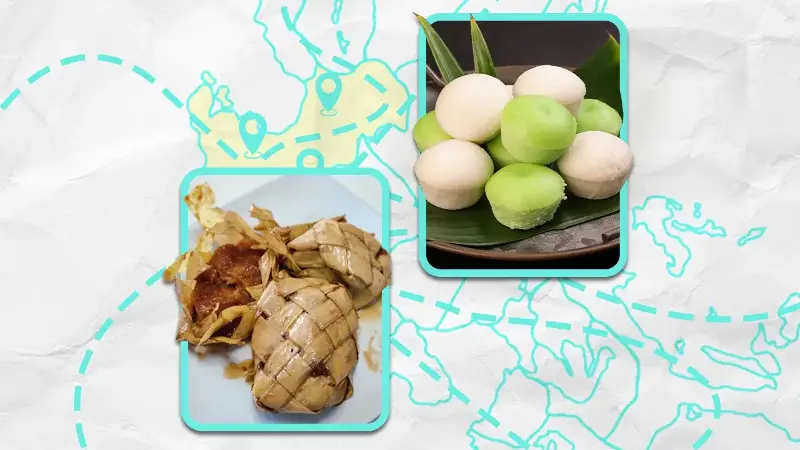
MANILA, Philippines — Cradled by rich salt beds, the province of Pangasinan took on the name “Panag-asinan” — later “Pangasinan” — to mean “the place where salt is made.”
But just as its air smells like fresh bangus (milk fish), fragrant buro (fermented dish), and flavorful bagoong (salted fish sauce), Pangasinan is equally proud of the sweetness that calls out to you from the corners of the bus stops to the roadside.
From Calasiao to Bayambang, and everywhere in between, come along for a quick food trip beyond Pangasinan’s salty shorelines and into the core of its sweetest desserts!
Puto
Calasiao, the second-oldest town in Pangasinan, is best known for its reserves of “white gold” — the beloved Puto Calasiao. The name puto traces its roots to the Malay word puttu, which translates to “portioned” — a fitting name for these bite-sized kakanins (rice cakes).
Putos are made from glutinous rice, sugar, and flavorings, often stuffed with a small amount of cheese and steamed into small and soft clouds of deliciousness. Aside from its pure white color, Puto Calasiao can also burst into a rainbow — pink (strawberry), purple (ube), yellow (mango), green (pandan), and more.
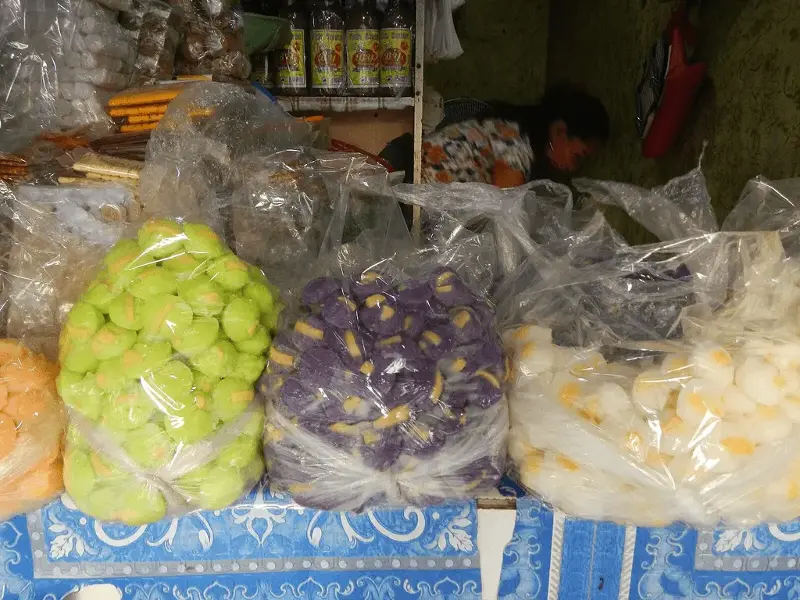
You will also see puto with kutsinta (the brown ones); the only difference is that kutsinta is made with a splash of lye water, which gives it its unique, bouncy, and jelly-like texture.
Tupig
Who said we only grill ihaw-ihaw? When you roll glutinous rice flour, coconut, sesame seeds, and molasses into banana leaves and cook them over live charcoal until soft, smoky, and sweet, you get one of the most iconic snacks of Pangasinan: tupig.
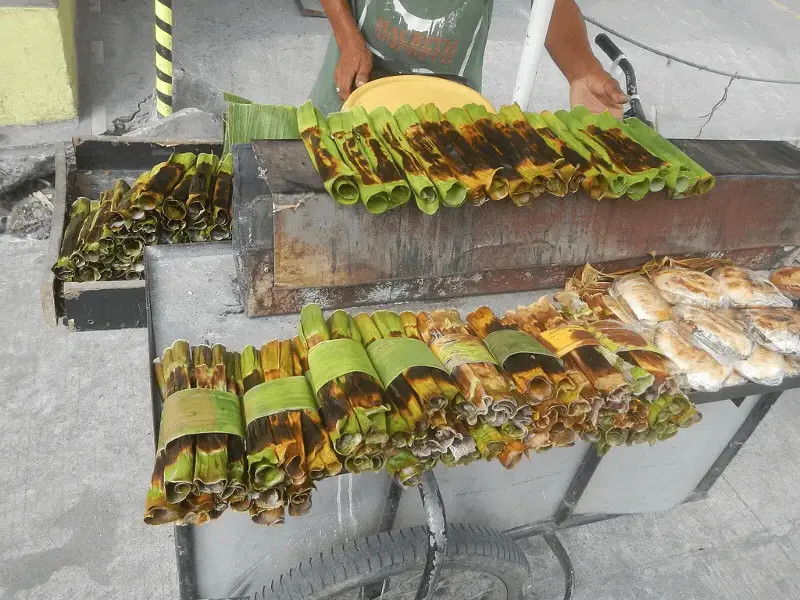
The word tupig comes from the same root as dippig in Ilocano, which means “flat.” Back then, tupig was a holiday staple, but today you’ll often spot it sizzling away as street food.
What makes this kakanin fun is that it’s never the same wherever you go. Some are rougher, with chunky coconut bits, while others are so sticky that they cling to the leaf. Then there are the ones that peel off clean — soft, chewy, and just the right amount of sweet inside.
Latik
In the Philippines, latik is the chameleon of kakanins (rice cakes) — every region has its own way of making it. In Bayambang and in other towns in Pangasinan, it takes the form of a kakanin cooked from glutinous rice and coconut milk.
The word itself may come from the Hiligaynon term for “to turn into syrup,” a nod to its signature crown: a glossy, golden sheet of caramelized sugar on top.
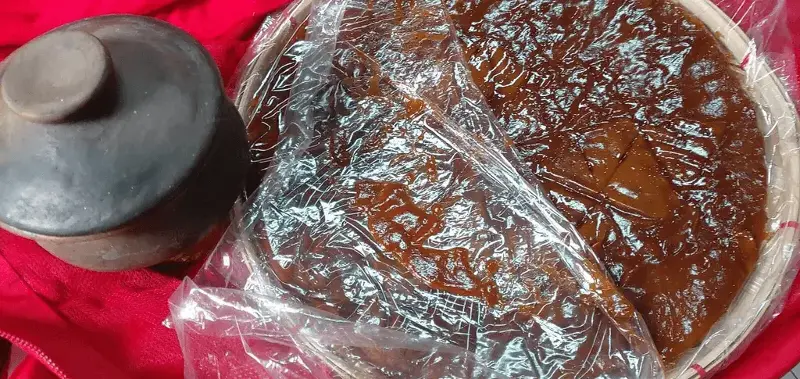
Unlike the light, bouncy texture of leche flan (caramel custard), latik is heavier and denser — the kind of snack that can fill you up just with a few bites. It’s best eaten warm, when the caramel is still gooey, but even after it sets and curdles on the rice, this kakanin still makes for a deliciously chewy bite.
Patupat
This might be the best-dressed kakanin you’ll ever meet! Pozorrubio, a first-class municipality in Pangasinan, proudly claims the country’s best patupat, even celebrating the native delicacy through a festival every year. Its neat four-sided shape explains its name, from “upat,” which means “four.”
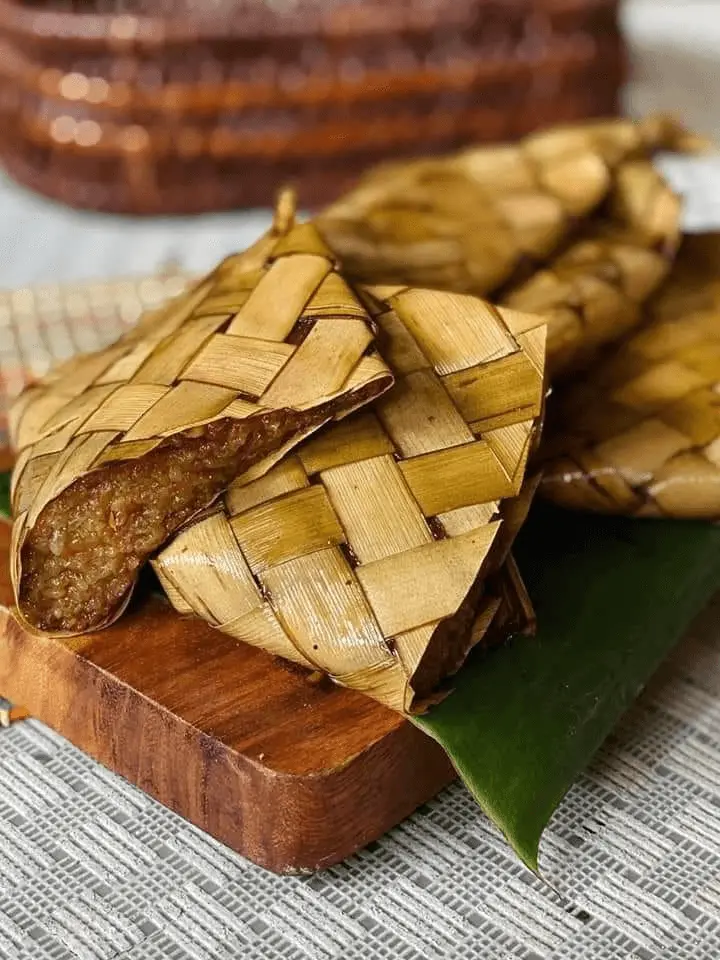
Patupat is made by slowly cooking glutinous rice in sugarcane juice until it takes on that deep brown color, and then wrapped in woven banana or coconut leaves. At first glance, it may look like just another kind of suman (sticky rice cake), but one bite will tell you it’s a delicacy all its own. While you’d want to pair the typical suman with brown sugar, patupat is sweet enough to be eaten on its own.
Inlubi
This isn’t your usual champorado (chocolate rice porridge)! Inlubi is a black rice cake made from coconut milk, sugar, and deremen — glutinous rice grains that turn from white to black during the burning process, giving this kakanin a distinct earthy flavor. And when toasted just right, a sticky bite can also turn into a crunch.
For Pangasinenses, it’s a tradition to prepare inlubi during Undas or All Saints’ Day, where it’s often placed on the household altar as a food offering for the dearly departed; less for its somber appearance and more for its sweet taste.
From latik’s golden gloss to inlubi’s earthy flavor, these sweet delicacies find their way to fiesta tables, solemn traditions, and even just the simple joy of eating merienda (snack).
The province may be known for its salt, but it’s also in these kakanins that you’ll taste the sweet heart of home. Each province, town, and even family has its own recipe and pagtatantsa — its own way of preparing, naming, and sharing these treats.
But if there’s one thing we can all agree on, it’s that our kakanins are more than food. They are memory, identity, and love — all wrapped in rice, coconut, and the folds of a banana leaf. – Jaella Magno/Rappler.com
Jaella Magno is a Rappler volunteer and 3rd year AB Literature major in Creative Writing student from De La Salle University.
